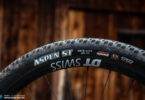For most riders, carbon is synonymous with the best: desirable, remarkably light and, of course, extremely high-performance. However, there is hardly any material surrounded by more myth! In this article, we’ll dismantle forum wisdom and dangerous half-truths. Let’s take a deep dive into the technology and discuss why aluminium can often be the better choice.
Regardless of whether it’s a frame, wheel, or handlebar, most of us would almost always choose the carbon version given the choice between carbon or aluminium. The fact that carbon is supposedly better than aluminium is suggested to us in the form of lofty prices and slick marketing. Recommendations for lightweight components, performance upgrades, and the message sent by most brands flagship models tell us carbon is best. But is it really? What’s myth and what’s reality? And when is aluminium the better choice?

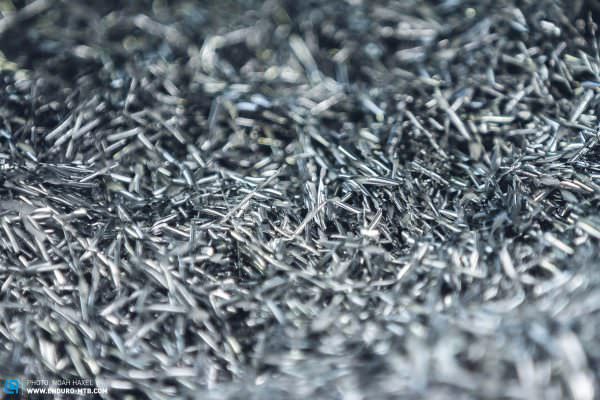
aluminium…
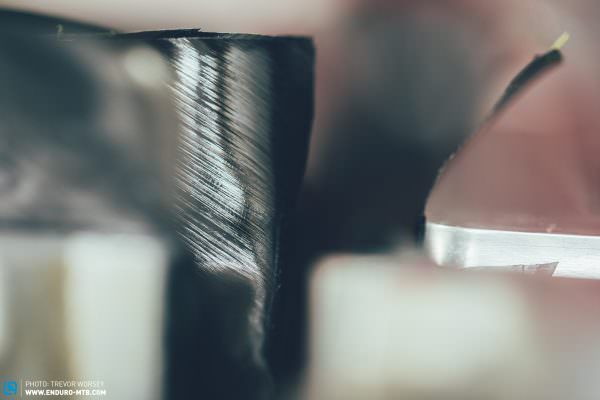
materials.
To answer this question, we did in-depth research and discussed the issue with renowned materials experts, developers, and product managers around the world. Among them were carbon fetishist Nic McCrae from Santa Cruz in sunny California, the Finnish aluminium machining master Leo Kokkonen from Pole and the tech-heads from REIN4CED in flat Belgium, who have combined metal and carbon in a unique way. We also spoke to Mirko Filler from Dresden-based carbon component specialist Beast Components and Cesar Rojo, the mind behind Unno Bikes in Barcelona. Finally, DT Swiss’ wheel experts Andreas Tschanz and Nils Verhoeven tuned in from Switzerland. That's a hell of a lot of concentrated knowledge! Is carbon better than aluminium? If so, is it always? Prepare yourself for an exciting look inside the experts’ minds and see which myths hold true! Of course, we will also talk about ecological footprints, recycling, and responsibility. It’s part and parcel of our wonderful hobby.
The most important mountain bike materials
Aluminium and, shortly afterwards, carbon fibre appeared on the then-burgeoning mountainbike scene as early as the 1980s and today they’re the two most used materials for frames and components. By contrast, steel and titanium have been pushed into niche markets. Way back in 1978, Charlie Cunningham welded his legendary CC Proto frame from straight- gauge aluminium tubes in California. Butting, i.e. variable wall-thickness tubing, was already common on steel frames and was quickly adapted for aluminium. Over the years, other industrial processes such as hydroforming and machining made their way into bicycle production. After LOOK Cycle produced the first carbon road bikes in 1986, the Lotus Sport was the first carbon mountain bike frame to appear in 1992. Through further development and countless exciting refinements, both aluminium and carbon evolved from the first daring prototypes to highly resilient, high-performance mountain bike materials. And while the general public is relatively well-informed about the debate between aluminium or carbon, we still encounter gaps in knowledge, half-truths, or downright false assumptions about these two materials in heated forum debates, bike park parking lots and numerous YouTube videos. The myths surrounding carbon remain!
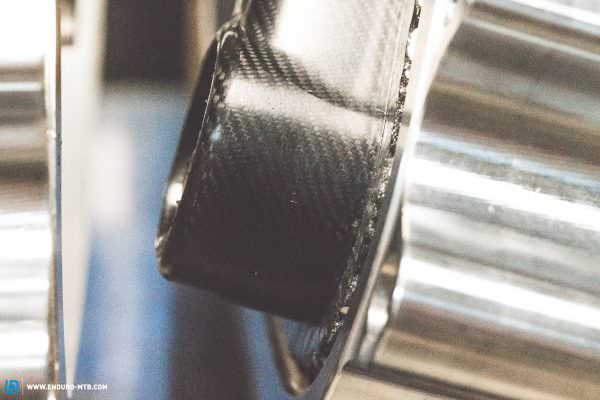
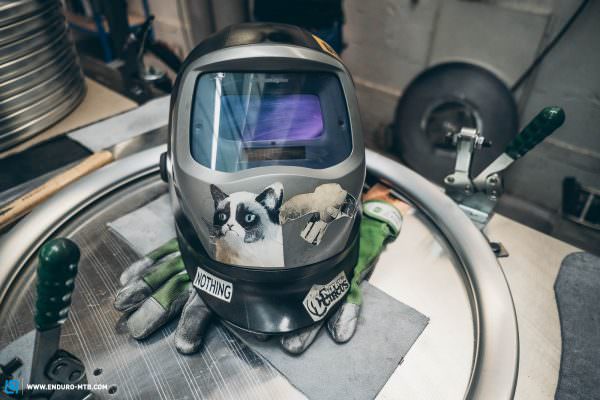
However, it’s a mistake to think in binary either-or categories that leave you blind to other good and worthwhile options! Instead of thinking in black and white, our aim is to consider both the strengths and weaknesses of the two materials and hopefully find out what is best for you and your bike.
Materials science: Isotropy, layup, hydroforming – All Greek?!
Hold on, it’s about to get technical. To delve deeper into the comparison of these materials, we must emphasise the crucial fact that carbon and aluminium are not all created equal. There are considerable differences in the composition of the raw materials, their manufacture, and processing, which ultimately affects the performance, durability, and price of the end product. As Nic McCrae from Santa Cruz states, "There are super high-quality frames and super shitty frames made with all of these materials." So, let’s take a closer look
at what these differences are.
Aluminium ≠ aluminium: Alloys, processing, and the production of raw material
We often refer to aluminium when we should be talking about aluminium alloys i.e., mixtures of pure aluminium (Al) and other alloying materials. In its elemental state, aluminium is light and resistant to corrosion, though unsuitable for most industrial applications and bikes. Pure aluminium is relatively soft, difficult to process and exhibits high thermal expansion. For example, by adding other elements such as silicon to pure aluminium (typically Al99.5), it becomes an alloy that can be welded. Additions of copper and zinc increase the strength of the alloy. Other metals, including magnesium, manganese, iron, chromium, titanium, or scandium can also be added in small amounts to modify properties, usually as proportions well below one percent. Different “recipes” ultimately result in the well-known aluminium alloys used to construct frames and components, such as Al6061, Al6069, Al7005 or Al7075. The numbered T suffix describes the tempering (heat treatment) of the alloy. For example, a T6 alloy is solution heat-treated and age-hardened, which gives it its maximum tensile strength. These and other physical properties vary considerably from one alloy to another.
The ultimate tensile strength describes the force required to tear a standard size piece of aluminium alloy when clamped to a test bench and stretched longitudinally. When subjected to repeated loading cycles, materials can fail at values below their tensile strength due to a phenomenon known as fatigue failure, thus making it relevant for older aluminium parts. The force up to which a material can withstand repeated load cycles indefinitely is its fatigue strength. If you add the above with the weight respectively density, you can calculate the strength-to-weight ratio for each material. Additionally, aluminium, like all metals, is an isotropic material, meaning it has identical properties in all directions. This is different to carbon fibre, which exhibits different properties in different loading directions. It has an extremely high tensile strength when pulled along the length of the fibres, but it is fragile when loaded laterally or compressed. The forces acting on a bike result in complex loading, meaning that carbon has to be laid up with fibres oriented in different directions to deal with tension, compression and torsion. But we’ll get to that in more detail later. As such, the test bench only allows a limited comparison of carbon and aluminium, but it still gives us valuable comparative figures for the various aluminium alloys.
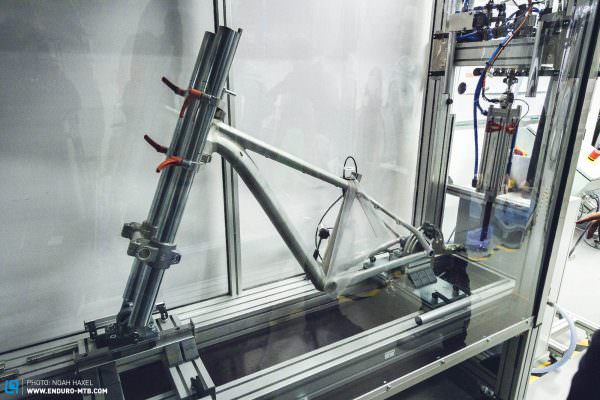

How is this reflected in frames and components? If you compare aluminium alloys found on bikes, lower series numbers are generally softer, easier to process and cheaper. The way these alloys fail is more forgiving as they’re capable of greater deformation before they tear. However, compared to higher grade alloys, their strength-to-weight ratio isn’t as good. That means you need to use more material to achieve the desired strength. Ultimately, you can
save money with lower grade alloys, but it comes at the cost of performance.
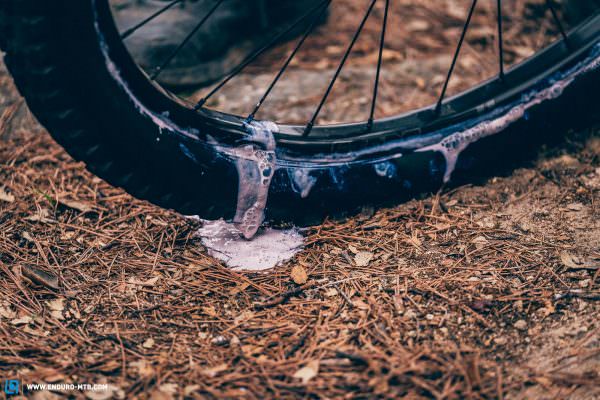
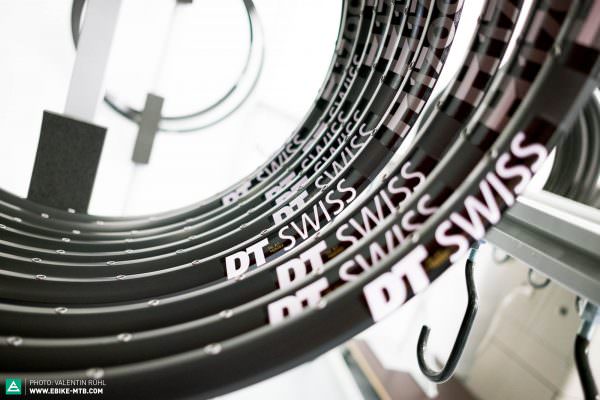
Al6069 has higher strength than a 6061 alloy with a similar specific weight. Therefore, a slightly more expensive rim made from 6069 will theoretically last a little longer and withstand greater loads than an identical rim made of 6061. DT Swiss EX 511 and Stan’s NoTubes Flow MK3 are two of many examples of popular enduro rims made from 6069.
On the other hand, 7xxx-series aluminium has a higher tensile strength and exhibits a higher fatigue strength than 6xxx-series alloys. However, these more brittle alloys aren’t recommended for rims because they are more likely to break than bend. Simply put, the higher the series-number of the aluminium alloys relevant for bike frames and components,the stronger and more durable they are. As the material is harder, it’s more difficult to process the alloys and thus more expensive. A 7xxx-series alloy commonly found on bikes is Al7005, as used for Renthal’s aluminium handlebars. Go even higher and you’ll encounter 7075 aluminium, as used by Finnish brand Pole. This alloy is even stronger but also quite expensive due to its scandium content and complex processing requirements. It is very hard and practically impossible to weld, which is why Leo Kokkonen relies on a CNC milling machine instead, machining the halves of his Stamina frames from solid blocks and then glueing them together. This promises a high-performance product but it comes at a price: a machined Finnish frame starts at around € 5,000, including the shock. That is significantly more than most carbon frames!
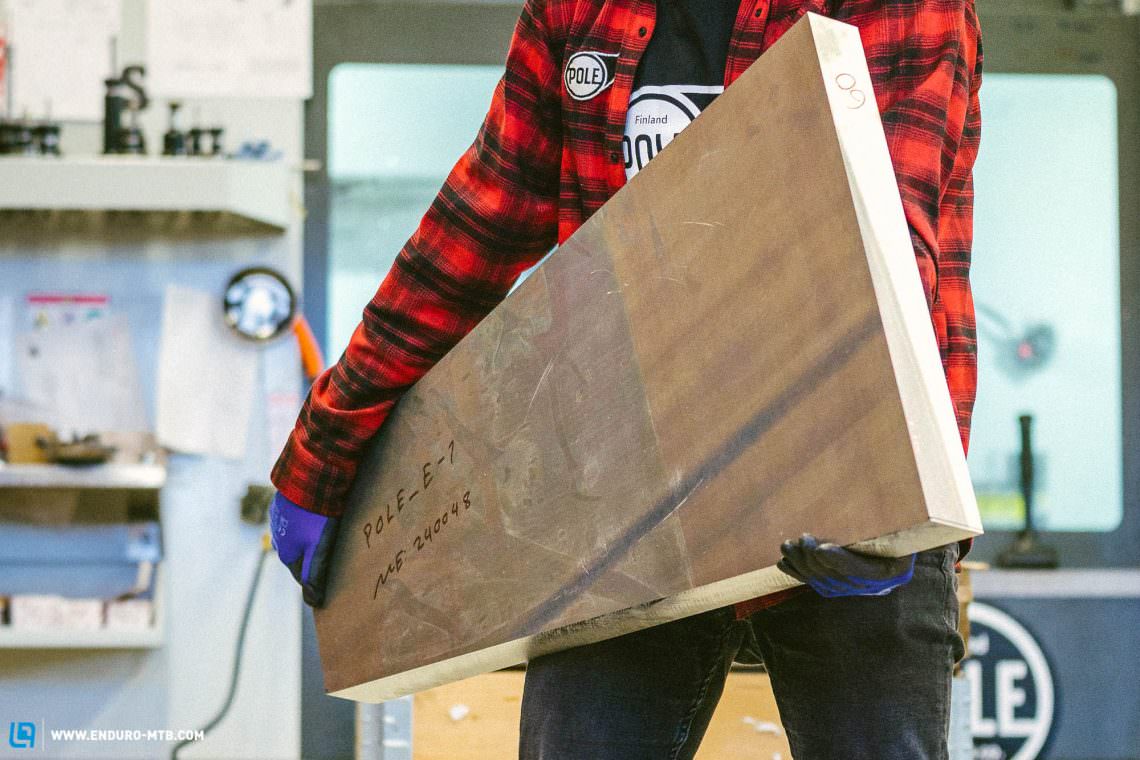
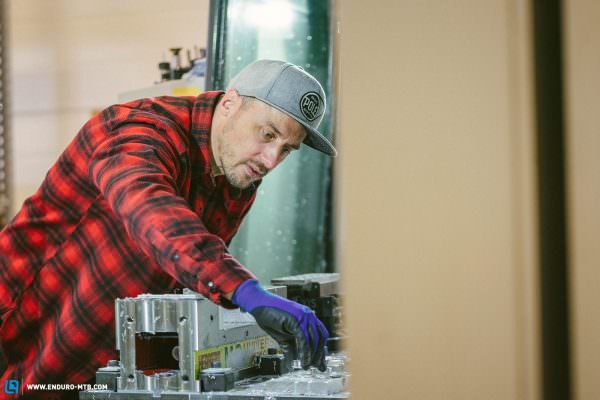
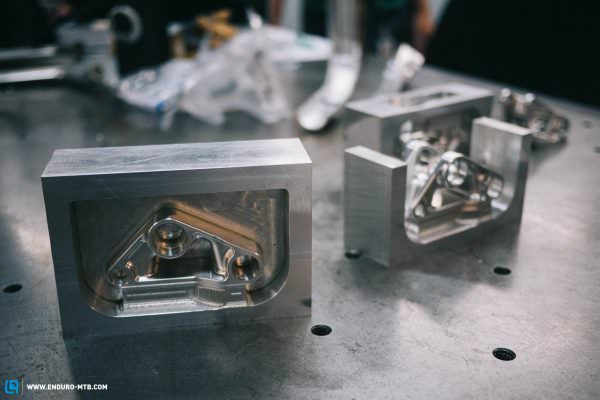
Unless machined from a solid block, the components for an aluminium frame are usually cut from preformed profiles with specific wall thicknesses and welded together in the desired arrangement. Modern frame production is largely automated thanks to welding robots.

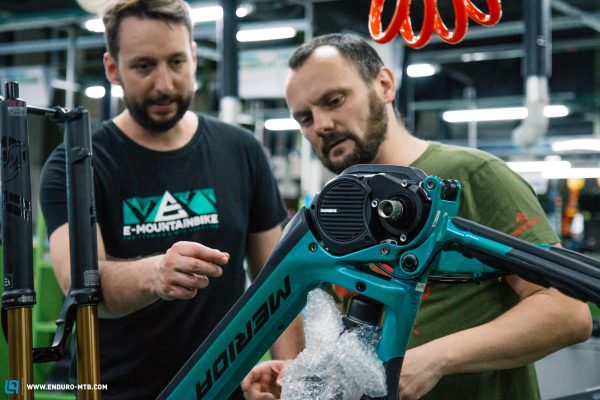
production, testing laboratories and production lines.
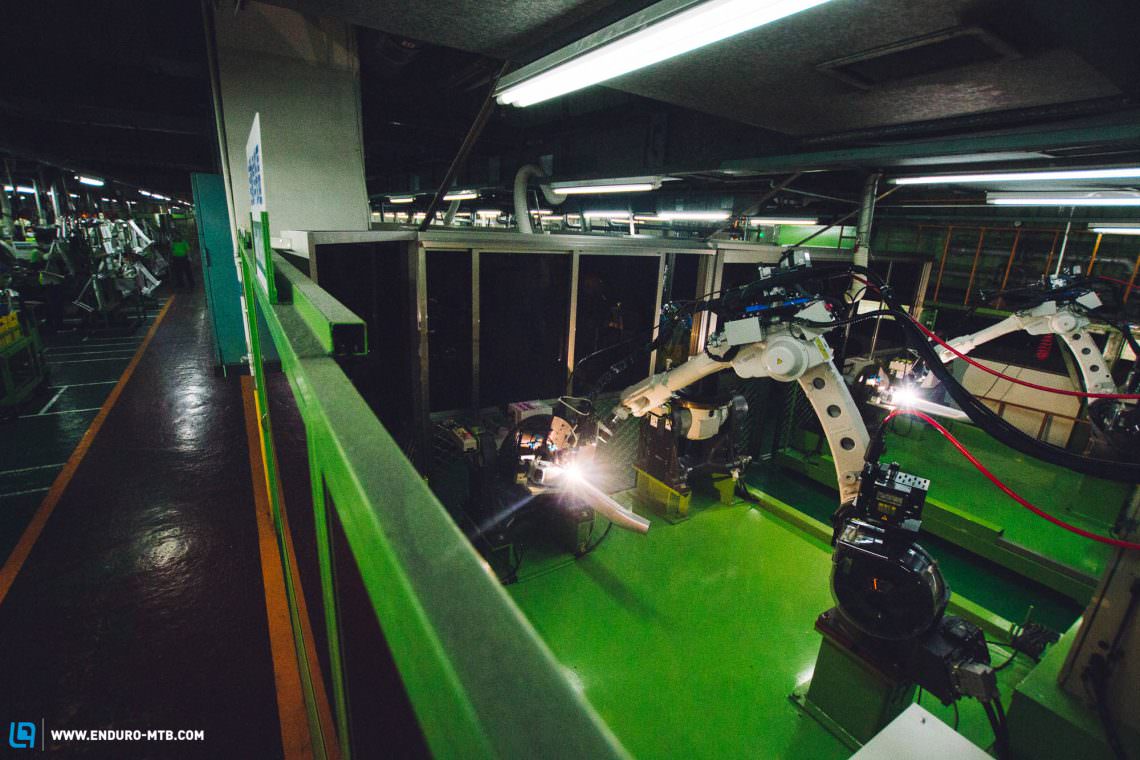
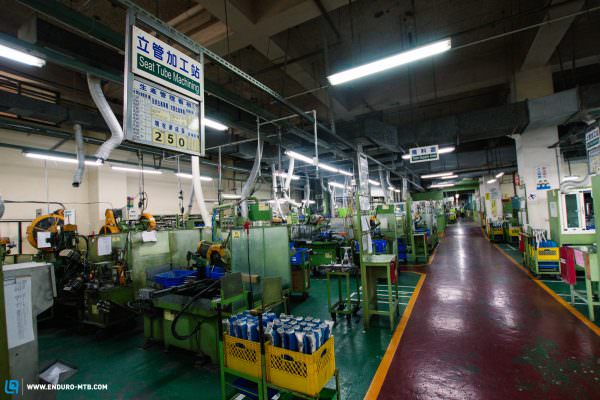
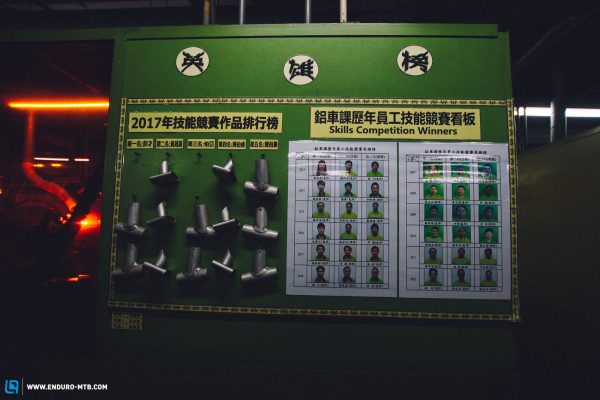
Thanks to butting technology, different wall thicknesses can be achieved along a length of tubing of a certain diameter. For example, a tube can have a thinner wall in the middle than at the ends where it’s exposed to greater forces, thus saving weight. Today, mountain bike manufacturers also rely on hydroforming for almost all aluminium frames. It allows more complex tube profiles to be formed which can vary along the length of the tube as well as
providing some control over wall thicknesses. To do so, a section of tubing gets placed in a mould and pressurised with a liquid. The tube expands and takes on the given shape of the mould – similar to the way a bicycle tube takes on the shape of the inside of the rim and tire when inflated.
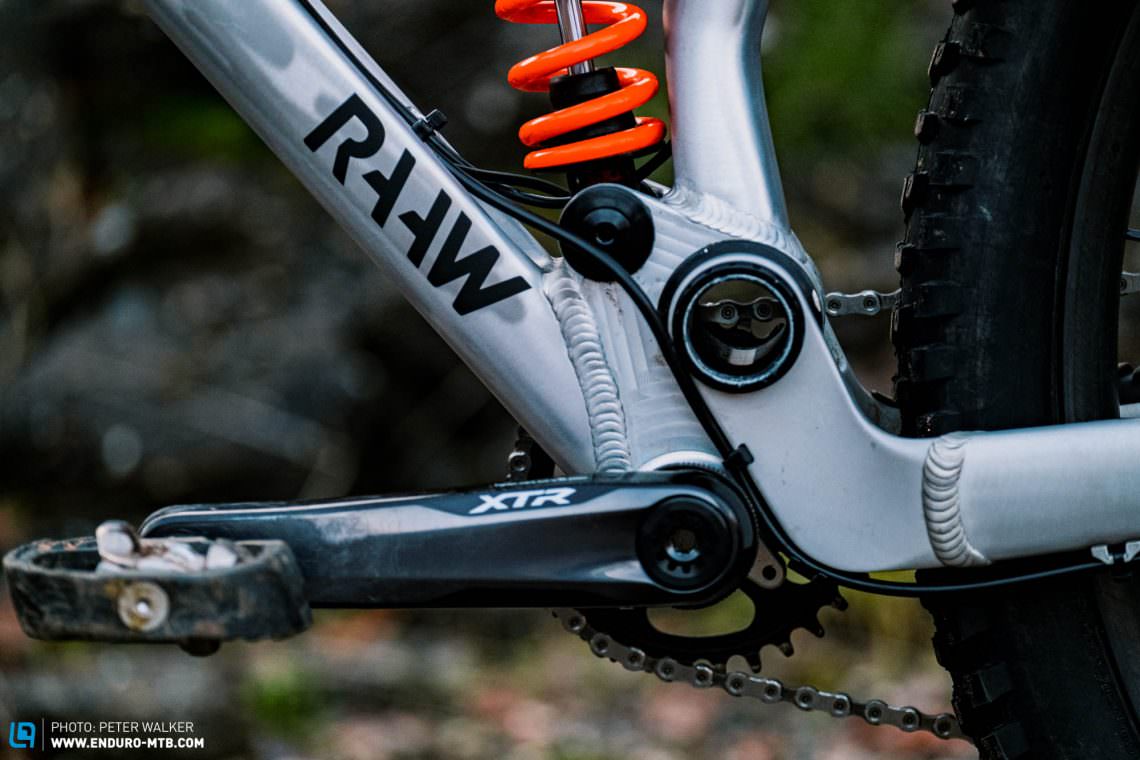
Theoretically, aluminium can be recycled
Aluminium gets extracted from bauxite ore which is sourced via open-cast mining. The largest producers are Australia, Guinea, China, Brazil, Indonesia, and India – many being notorious for their poor working conditions. Metallic aluminium is ultimately won through additional processes that require high energy input. The production of a single kilogram of the metal consumes around 15 kWh of electricity and, depending on the type of electricity
generation, generates up to 25 kg of carbon dioxide. How much does an aluminium frame weigh again? In addition, the primary extraction of a ton of aluminium oxide produces the same or up to one and a half times the amount of harmful red mud, which ends up in huge basins and landfills and currently is hardly recyclable. Fortunately, at least the final aluminium product can be recycled. Once produced, only 5–10% of the energy required for primary production is needed to recycle it. For Leo Kokkonen, this is a central argument when deciding between carbon and aluminium. “We really need to think about this in the long term. The more material we produce that we cannot recycle, the more this is going to be a problem in 100 years. Metals can be recycled forever. There is no trash laying around afterwards.”
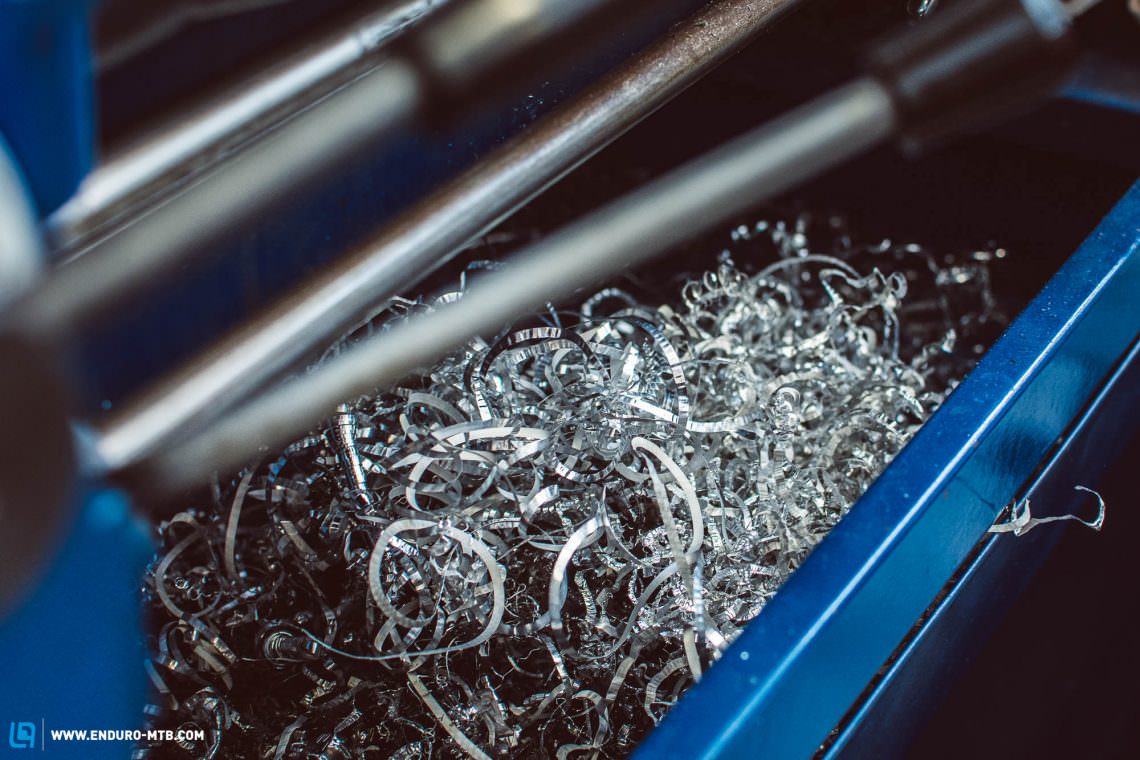
However, recycling has a catch: with current technology, there's still a reduction in quality with every cycle. If the various alloys that end up on scrap heaps were sorted according to type, Leo’s image of the eternal cycle could be correct. However, the different alloys usually get mixed up in scrap yards. When this is melted down, it results in a mixture from which it is impossible to produce high-quality alloys as some impurities can no longer be removed. In fact, the majority of Germany’s aluminium scrap ends up as inferior cast aluminium or even as an additive in steel production. Currently, not even a quarter of the aluminium processed worldwide comes from recycling.
“Bicycles are luxury items. Still, we should produce them as ecologically as possible.“ – Leo Kokkonen, Pole
„A product is only sustainable if it reuses its source material. Neither raw aluminium nor raw
carbon does. I do not think one is any cleaner than the other.“ – Cesar Rojo, Unno
Leo Kokkonen is right that aluminium could be a clean raw material. If we get our act together and separate our scrap metal, there is a chance that the aluminium of an old Stamina frame will one day find its way back to the Finnish CNC milling machine to be used as the basis for a new frame. The more often this can be achieved, the smaller the frame’s ecological footprint becomes. It gets even smaller if the frame lasts a long time and doesn`t have to be recycled at all.
What is carbon? Fibres, 3K, 12K and UD prepregs
When we hold a finished product made of carbon fibre reinforced polymer (CFRP or carbon for short) in our hands, we see the result of many complex manufacturing steps. Obtained with high energy input, the black fibres consist almost entirely of pure carbon and are first arranged into small bundles or scrims. These are then laid out in the desired arrangement, pre-treated with a resinous binder, and made into flat sheets. The production of the required
resins also requires large amounts of energy. The fibre and resin sheet, the prepreg, is rolled up and made available to manufacturers. This is the starting material from which pieces are cut to size and then hand laid into moulds according to the layup schedule, a plan which defines where prepreg needs to be placed to achieve the desired properties and required strength for a frame or component. Once the two halves of the mould are lined with the required pieces, they are joined together. Elastic bladders are usually placed inside the moulds and inflated, pressing the fibre layers against the wall of the mould. Next, the mould gets baked in an autoclave, curing the epoxy resin contained in the prepreg to create the finished frame or component. After the component has been cured, the bladders are removed through the remaining openings, such as in the bottom bracket, seat tube or head tube. This monocoque or one-piece construction is the most common method in use today. Frames made of individual carbon tubes and sleeves used to be common among road bikes but are rarely found on modern mountain bikes. One of the only examples are Atherton Bikes.
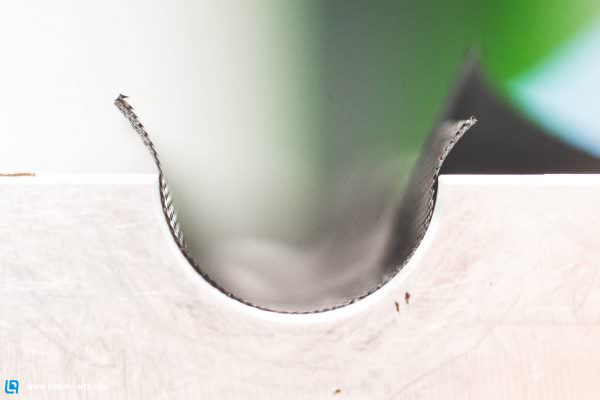
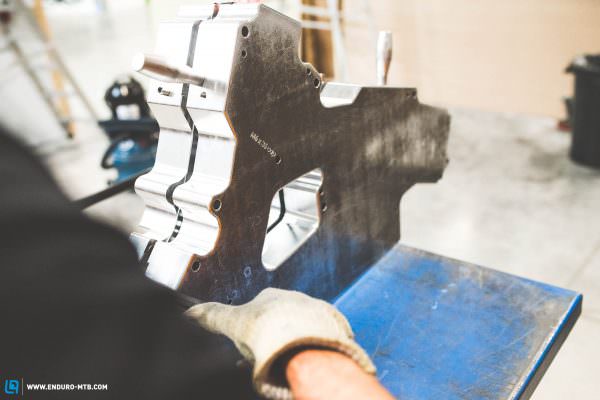
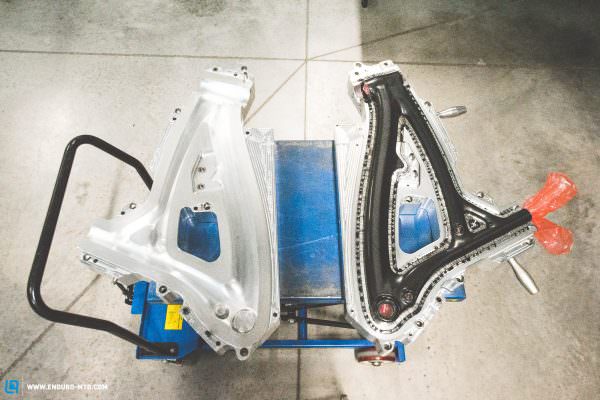
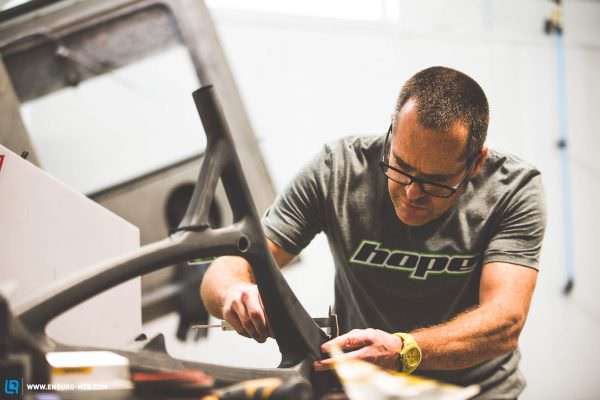
What we ultimately see when looking at the finished component are only the outer layers of prepreg. The characteristic 3K and 12K fabrics consist of fibre bundles arranged at right angles, each with 3,000 and 12,000 individual threads. However, with unidirectional (UD) prepregs, the fibres all run in the same direction.

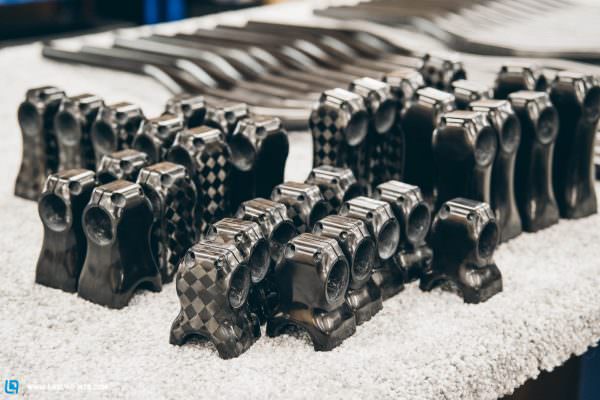
Carbon layup: The art of layering
The arrangement, shape, and number of prepreg pieces at different points of a component is one of the most crucial factors determining the quality of the finished product. This pattern, the so-called layup, is an almost infinite field of experimentation for manufacturers of high-performance components and one of the biggest reasons for differences in quality. Every sheet must be laid precisely by hand, they can slip in the mould, and intricate layups require a considerable investment of time.


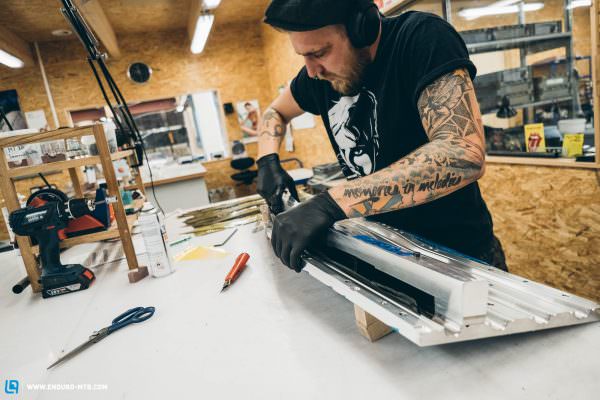

CFRP is an anisotropic material. While isotropic aluminium has the same properties in all directions, carbon is only strong along the direction of its fibres. This also only applies to pulling forces, not to compression. Though unidirectional, it’s tremendously strong in that one direction: carbon can have more than ten times the tensile strength of aluminium alloys and exceeds them in terms of fatigue strength. “If you ride an aluminium frame hard, it could end up cracking after two years. But once you have a good construction, a carbon frame will last forever”; says Cesar Rojo from Unno Bikes – at least if it isn’t damaged in a crash, cracked from an impact, or the layers of fibre separate, also known as delamination. Even if you can’t see the damage, it can reduce the component’s load-bearing capacity, causing a sudden and unexpected failure during peak loads.
Asia is the undisputed centre of global carbon manufacturing. Most bike factories are located in China and Taiwan, using a majority of prepregs from Asia to produce frames and parts on behalf of several brands. Carbon production outside of Asia is rare in the bicycle industry and can be leveraged as a unique selling point, as with Beast Components from Dresden and Unno Bicycles from Barcelona.

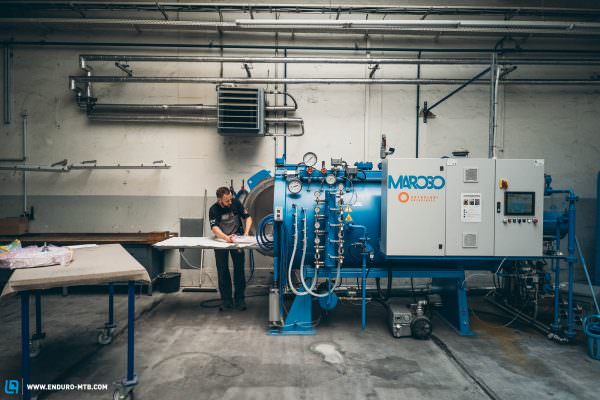
Carbon production is a very energy- and, above all, labour-intensive process. In addition to high water and energy consumption, requiring heat, various chemicals and resins, the human factor plays a huge role. In contrast to the production of aluminium components which can often be automated, carbon parts require manual labour, unrolling prepreg, cutting and sorting the sheets and placing them in moulds by hand before being vacuum-sealed and baked. So, it’s critical that we as the consumers consider the conditions under which our coveted high-end components were manufactured – who worked in which country and under which conditions to make them available.
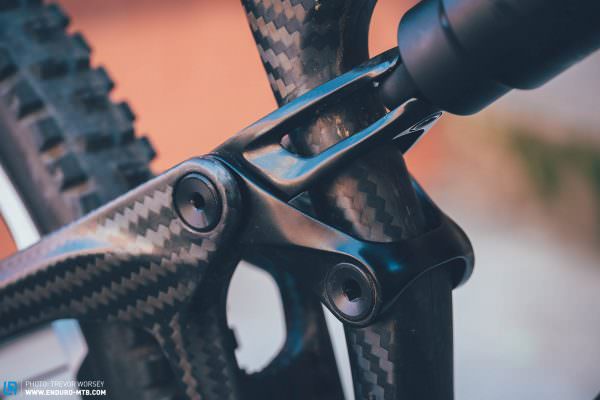
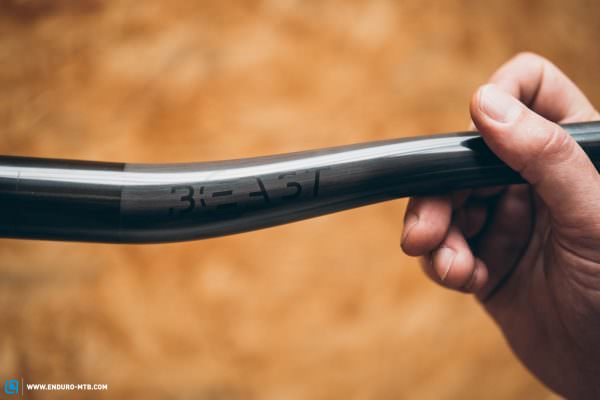
Depending on the fibre quality and resin system, the prepreg itself has a significant impact on the quality of the product. There are a few other manufacturers of prepregs outside of Asia. For example, Mirko Filler from Beast Components sources his carbon sheets from within Europe.
Downcycling instead of recycling
The recycling of fibre-reinforced polymers such as carbon is even more difficult than recycling aluminium. The aim is to remove the extremely heat-resistant carbon fibres from the epoxy resin, allowing them to be reused. This is currently achieved by a few highly complex processes by burning (pyrolysis) and chemically dissolving (solvolysis) the resin to separate the fibres. However, the capacities of these systems can only handle a fraction of the waste material being produced. Unfortunately, most of the remaining CFRP waste is a problem for which we’re yet to find a solution. The fibres are nearly impossible to incinerate and mechanical shredding creates toxic and electrically conductive dust, dangerous for people and systems. Therefore, some are choosing to store old carbon in the hopes of finding a way to recycle it in the future while the rest is filling up our rubbish tips.
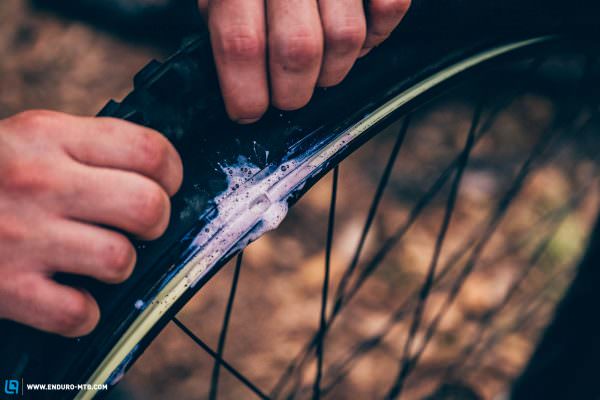
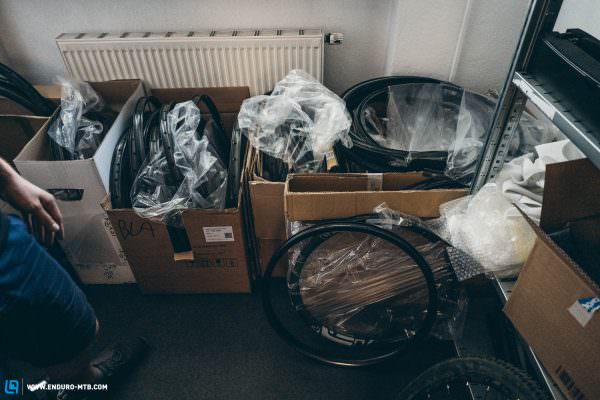
Unfortunately, neither of the two materials is truly sustainable as things stand. When it comes to disposal, aluminium requires more careful sorting to be recycled in greater quantities and quality. Nevertheless, metal is closer to a solution than carbon, with the latter so difficult to recover and reuse. Unfortunately, both require a lot of energy to be produced, although the footprint of carbon is significantly larger than that of aluminium.
As a rule, it is better to buy right and buy once! A high-quality product that you can enjoy for a long time instead of having to replace at regular intervals contributes to a better balance sheet.
The future: Why not combine carbon and metal?
CFRP Components are stiff, durable, and light but show weaknesses in dealing with mechanical damage and must be laid up by hand. Aluminium is largely processed by machines and is more resistant to impacts and getting hit with stones, though it’s not as strong as carbon. So, why not combine the benefits of carbon and metal? Welcome to
REIN4CED! The Belgian brand have developed a process by which they add a fine layer of thin steel threads to carbon fibre sheets.
“Many brands are looking for an escape route out of Asia. Hopefully, we can play a role in
getting some of the carbon fibre manufacturing done in Europe! Producing and buying locally
has a significant sustainability impact.” – Dave Luyckx, REIN4CED
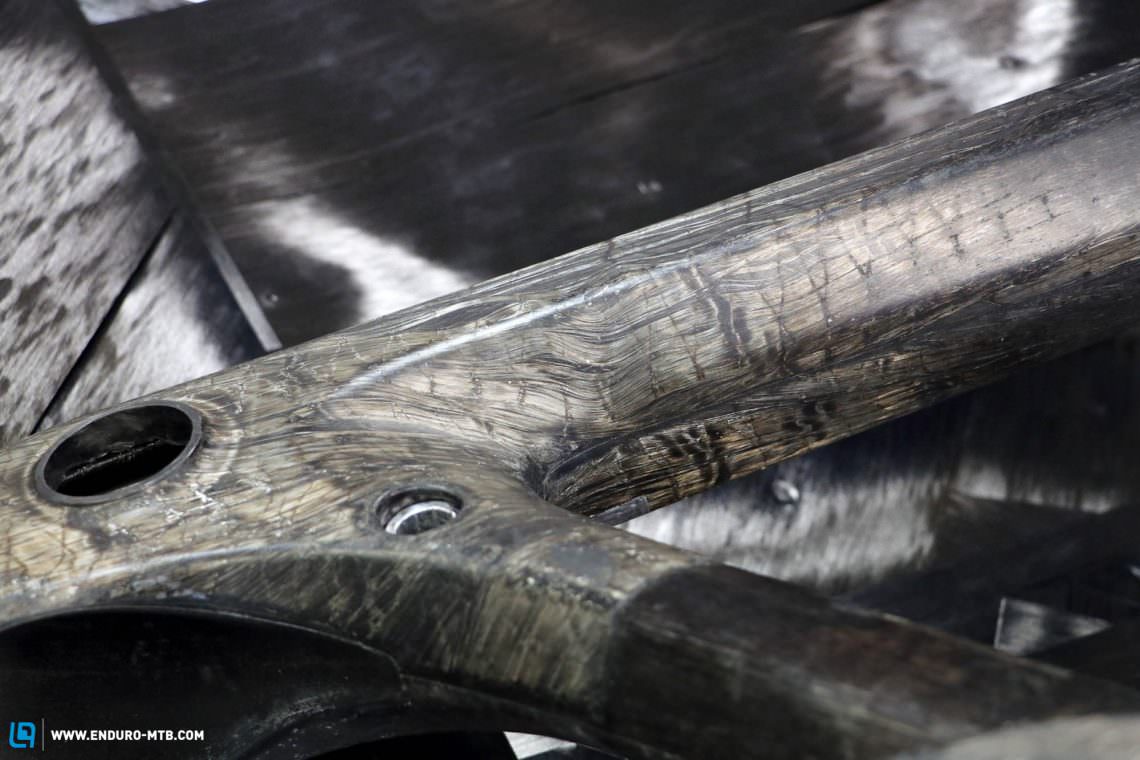
The outer metal layer is claimed to make the carbon more resistant to impacts, increase its load bearing capacity, and prevent cracks, all without adding weight. One of REIN4CED’s other achievements is their highly automated manufacturing process, thanks to which they aim to manufacture entire frames with almost no manual labour. The Belgian company is already producing the frame for the new Kellys THEOS eMTB, which we’re hoping to put to the test soon. So, will Belgium become the new Taiwan? Collaboration is already being planned between REIN4CED and manufacturers such as the Accell Group. We’re excited to see where it leads! The fact is that many brands are trying to reduce their dependence on Asia. The current boom has illustrated better than ever the danger of such dependence and how difficult it is to secure production slots, which can push companies to the brink of collapse, especially if they haven’t got the clout of the biggest brands.

Carbon versus aluminium – What matters and what are the differences?
Carbon has conquered the performance sector of our sport. But the fact that the professionals rely on carbon components even in bike disciplines that are hard on equipment doesn’t say much about their durability and suitability for everyday use.
Nightmare or reality?
We’ve all heard the horror stories of failed carbon components, but that doesn’t mean that carbon products are prone to failure. Carbon is an extremely capable material! Danny McAskill proves this impressively as he struggles to destroy the carbon rims of his Santa Cruz Reserve wheels by smashing them into concrete steps – without tires, mind you. If you want, you will manage to break any component with the appropriate riding style! And you
don’t have to be a professional to do so. All you need is the financial backing as it’s likely to get very expensive if you don’t have a sponsor supplying the components, especially with carbon.
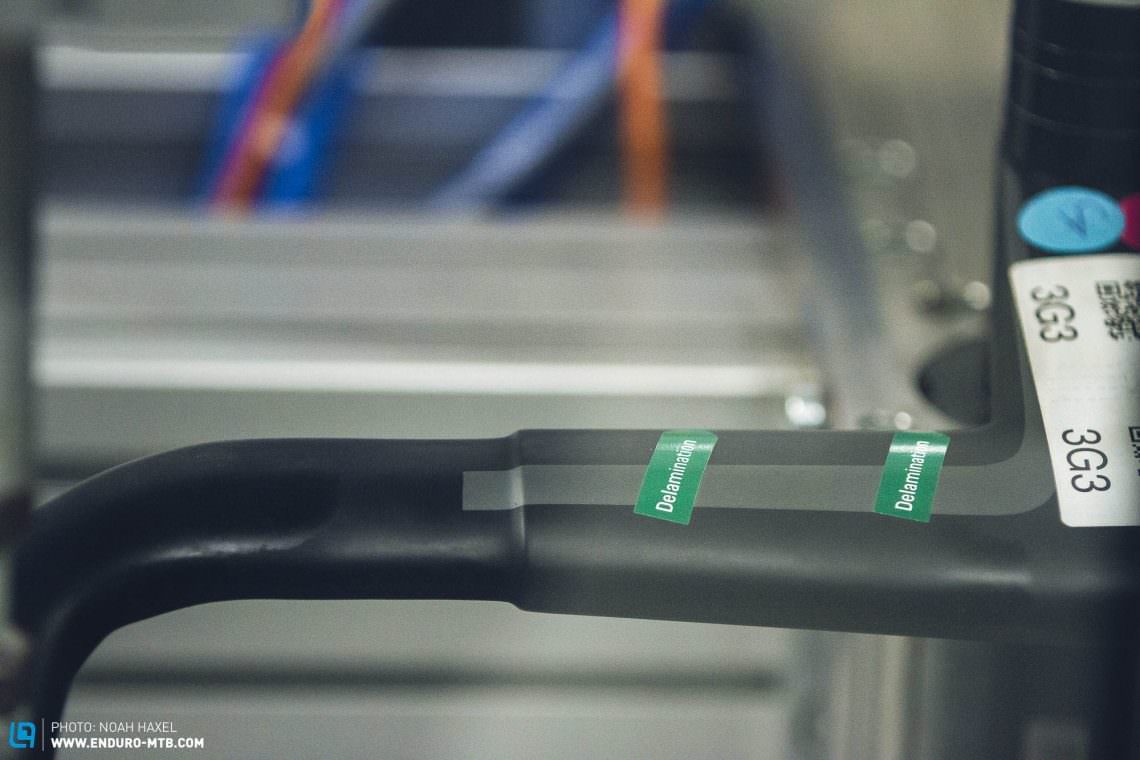
We test over 100 bikes every year. We know from first-hand experience that there are significant differences regarding the durability and performance of every component, regardless of whether it is made of aluminium or carbon. If a product is designed with only one property in mind, such as durability, it’ll most likely be compromised in terms of compliance, damping, weight, or other criteria. A good product offers the best compromise between the desired, often contrary properties for a specific application. Accordingly, it all depends on the product’s construction and processing and the context in which it gets used. The quality of the manufacturing process is also a major contributing factor to these characteristics.
Quality: A question of workmanship
Aluminium processing has come a long way and is a mature technology. Many processes are automated, the isotropic nature of the material allows the properties of the finished product to be relatively predictable, and the industry has a lot of experience with different alloys in specific applications. Since different alloys provide well-defined material properties, primarily technical details such as the quality of welds, forging-process and post-treatment of Aluminium leave room for improvement.

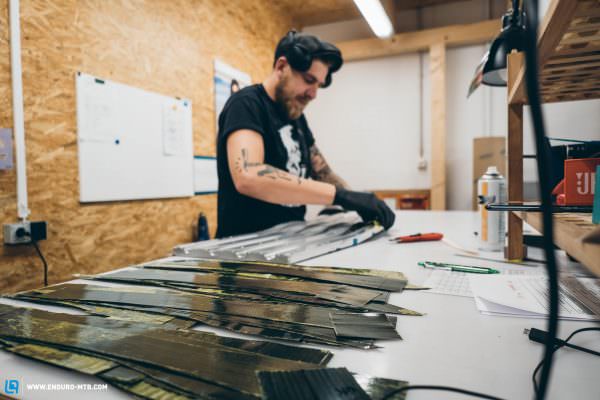
In contrast, carbon production is still developing. Cutting, aligning, and arranging the prepreg is an essential factor for the quality of CFRP products – and still hugely experimental. ” We’re still going to see a lot of different concepts and construction methods for carbon in the coming years,” expects Nils Verhoeven from DT Swiss. Even the available prepregs differ in strength, malleability, and price tag. The more layers of high-quality fibres are laid with the same wall thickness, the more precisely the properties of a component can be tailored. This results in a higher quality product, though also one that’s more expensive.
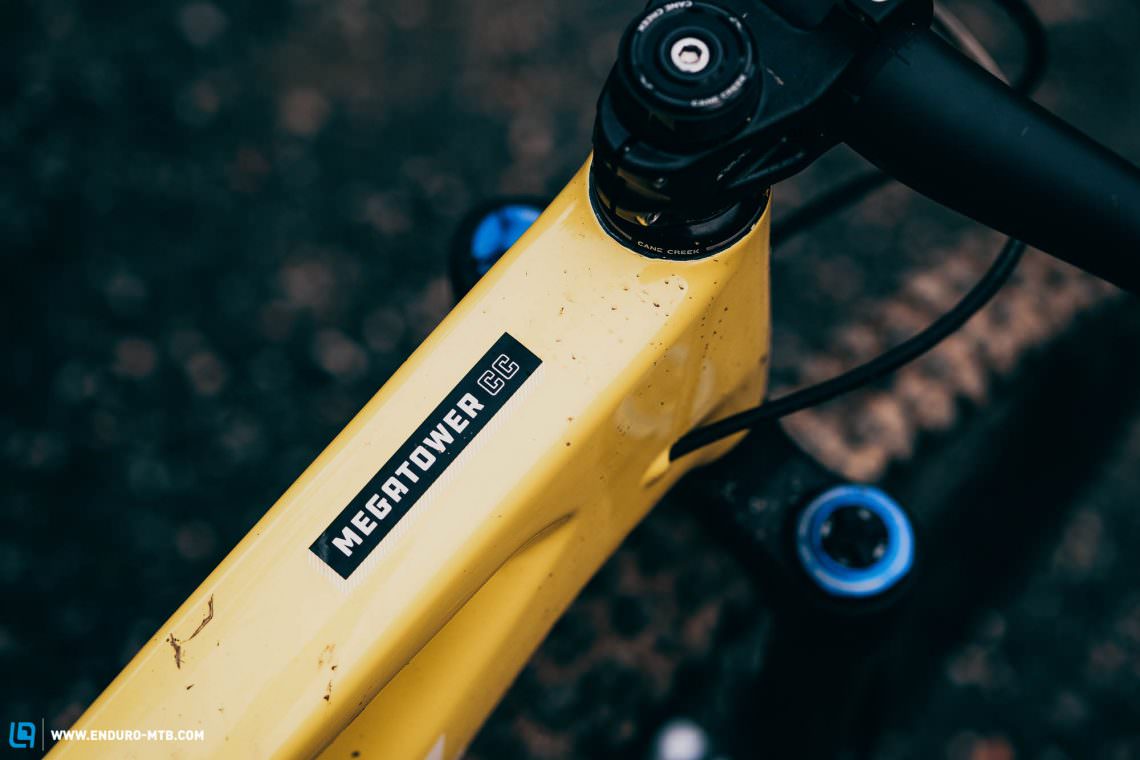
For this reason, numerous manufacturers including Canyon, Trek, Specialized and Santa Cruz, offer different grades of carbon frames. Santa Cruz offer their bikes with either CC or C level frames. The lighter CC models rely on a larger proportion of higher strength fibres, where the C models use lower strength fibres. As a result, the CC version is stiffer yet also lighter than the C version. In other words, the difference is not just in weight but also in performance. The differences between the different grades of carbon used on the same range of models are particularly noticeable in the road bike sector.
“A well-made component is one in which the right fibres are used for the
loads it will have to bear.” – Mirko Filler, Beast Components
“I can have the best layup on my desk but the basis for a good carbon
rim is a precisely monitored production process.” – Andreas Tschanz, Head of Rims Engineering, DT Swiss


The enormous freedom in design, budget limits and the human factor mean that there are still considerable differences in quality regarding carbon components. High-quality carbon fibre parts require brainpower, precision and, above all, professional craftsmanship. And it is precisely because of all these factors that many brands fail – especially when they want to keep production costs down. Quality control is a crucial part of the equation, for which numerous brands must rely on their producers as they don’t have the in-house know-how to do so themselves. According to Nic McCrae, Senior Composites Engineer at Santa Cruz, cheap carbon products often aren’t bad in terms of the quality of the fibre itself but in terms of the workmanship. “Very often, cheaper components that I have seen tested show layers of fibre that are poorly arranged, wrinkles, and changes of thickness. The problem for the consumer is, how do you tell” So, we cannot speak of carbon in general terms because it
depends heavily on the quality of the material as well as the manufacturing process.
Material-appropriate construction: The component is only a part of the whole
With carbon, knowing what is right comes with experience and understanding the context in which the component gets used. The fact that it depends on more than the individual component is evident in the development of a product. For example, let`s consider a handlebar.


Handlebars are exposed to a lot of different forces, and by that we don’t just mean the rider pulling on the handlebar when sprinting or landing nose-heavy in rough terrain. In addition to the rider, handlebars also have to cope with the clamping forces of the brakes, stem and grips. The contact areas between the clamps and the handlebar surface play a vital role, necessitating material-specific design. Since carbon is an anisotropic material, sensitive to compression and side loads, you can easily damage a perfectly constructed handlebar by using an incorrect clamp or torque. Earlier brake lever clamps had a round clamping surface that created a large contact area with the handlebar. Current Shimano XTR brakes, on the other hand, have oval clamps with cut-outs to save weight, which, instead of hugging the round profile of the handlebar and spreading the force over a large surface area, concentrate their clamping forces on certain points. This design isn’t appropriate for carbon and its
characteristics.
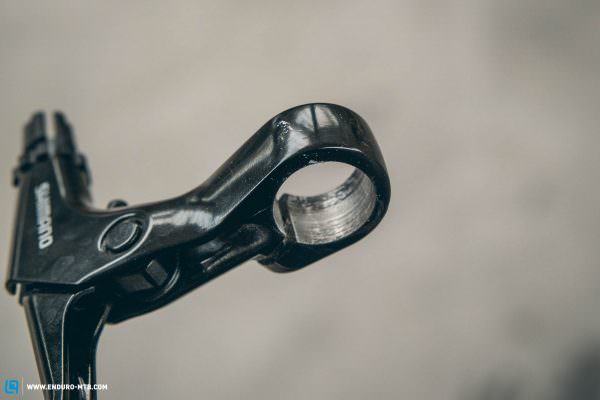
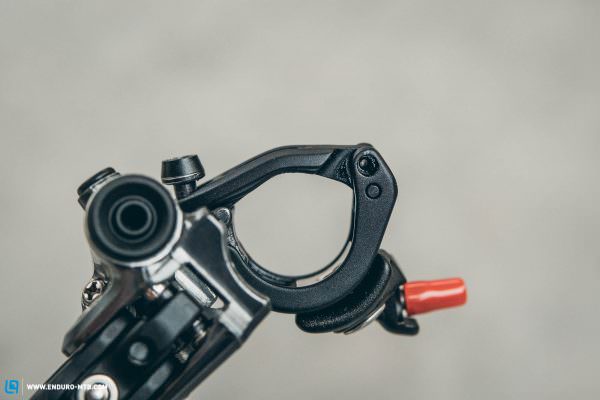
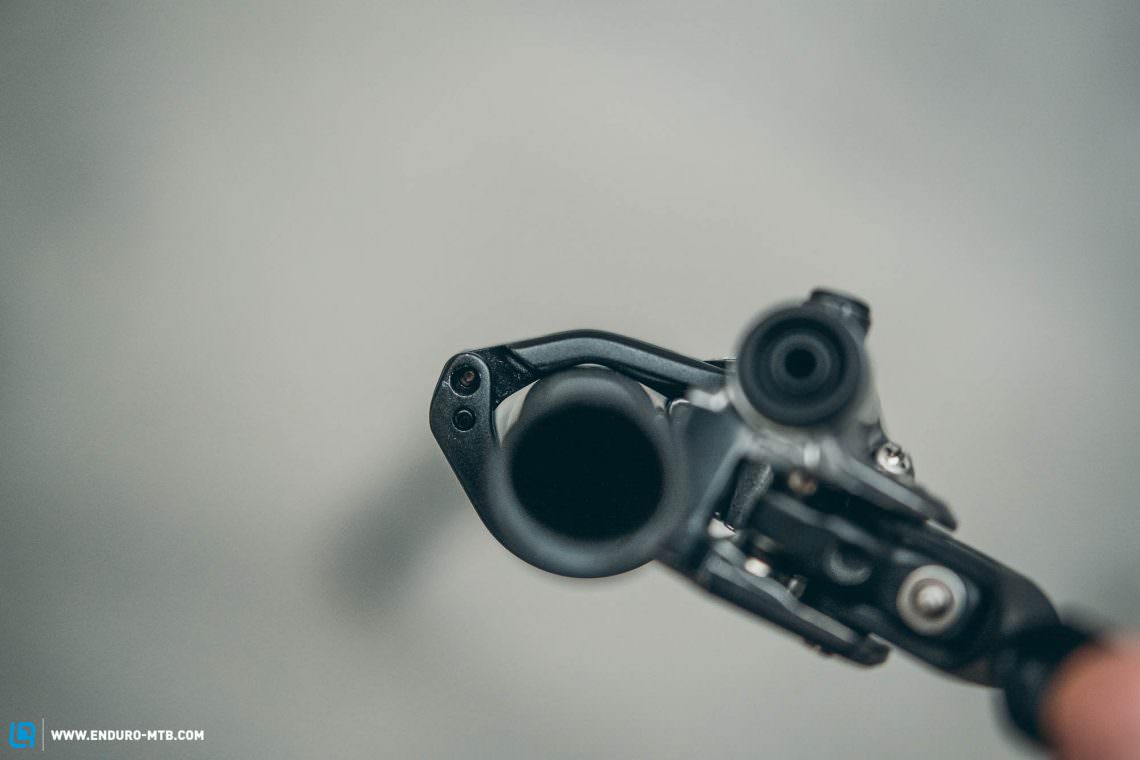
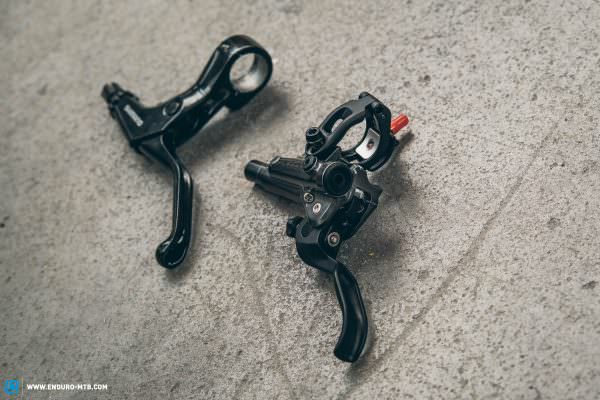
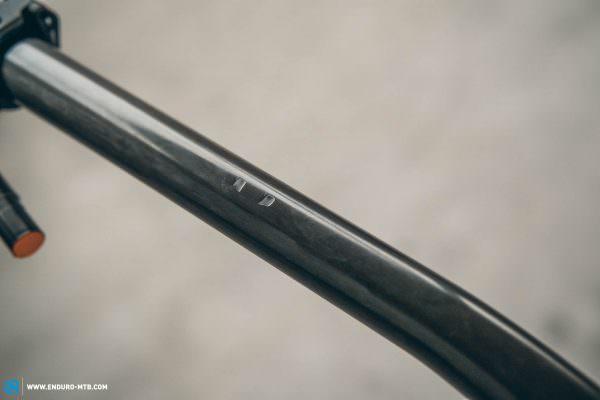
They don’t necessarily pose a health risk, but regularly checking the torque is crucial with these clamps – especially after a crash. To cut to the chase, the compatibility of different components is just as important as the functionality of an individual component.
Aluminium or carbon – What differences can you feel on the trail?
Mountain bike frames, rims and handlebars are commonly available in both aluminium and carbon. However, due to the possibilities offered by the material, a lack of real-world testing or simply the hype created by marketing departments, CFRP components used to be extremely stiff. In the meantime, the manufacturers have realigned their focus and the latest buzzword is compliance. As a result, the trend towards robust components that still offer a
certain amount of flex is spreading.
Carbon can be stiff or flexible. – Mirko Filler, Beast Components
Instead of mercilessly delivering unfiltered feedback from the trail, current carbon rims, such as the Crankbrothers Synthesis or Zipp 3ZERO MOTO, are designed to be supple and compliant. Instead of unforgiving stiffness, OneUp Components have deliberately imbued their carbon handlebar with a certain amount of flex. The frame builders we interviewed at Unno and Santa Cruz, amongst others, also make it clear that stiffness is no longer a top priority and that some things can be better with the appropriate flex! Meanwhile, increasing experience is enabling designers to create stiffness and durability where needed while allowing flex in specific directions, especially with load-oriented unidirectional fibres.


Aluminium alloys can’t match the stiffness and tensile strength of carbon fibre in the longitudinal direction. However, depending on the wall thickness and construction, you’ll find aluminium frames and components that are incredibly sturdy and stiff. Carbon components can be either compliant or stiff. The riding characteristics of our frames and components are largely determined by the way they’re constructed. Aluminium’s lack of fatigue strength can be counteracted through the skilful placement of reinforcements. Cesar Rojo from Unno concedes that COMMENCAL’s aluminium frames are strong and durable, albeit a little heavier. If you’re on a tight budget, good aluminium components are a safe bet. However, a good carbon component may offer the desired strength at a slightly lower weight or exceed them at a similar weight. Some describe the handling of carbon frames as feeling snappy and direct. Still, given the enormous differences in construction and production, we can safely say that not all carbon is created equal! Either way, carbon fibre offers fewer constraints in construction and design and thus allows the flowing shapes that we’ve come to love when it comes to carbon frames. And hey, if you enjoy the mere sight of your bike, you will love the ride so much more!
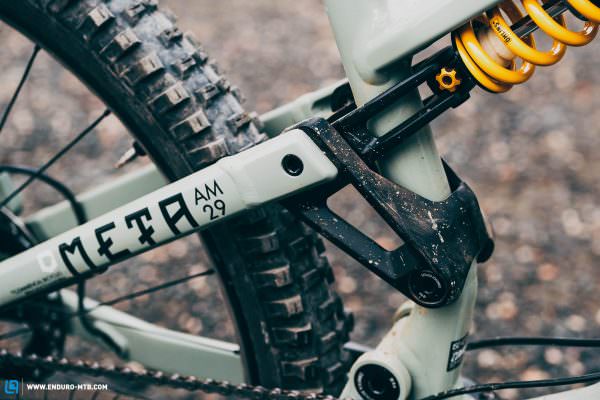
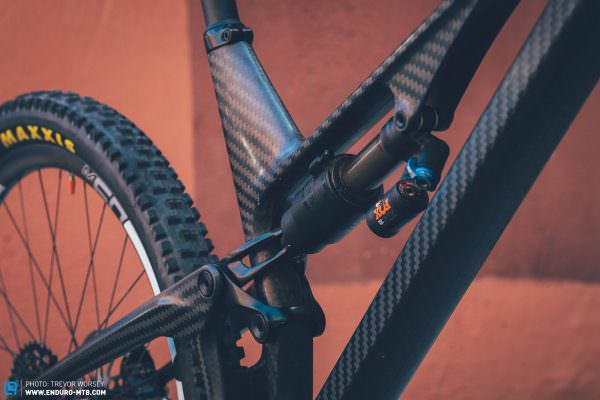
Material fatigue plays less of a role with carbon than with aluminium. Well-made carbon components can last a very long time if you don't damage them in a crash! However, once a carbon part is damaged, whether visible or not, its performance is compromised and it can fail spectacularly without warning. Aluminium, on the other hand, is more predictable, bending and cracking before failing entirely. So, unless you’ve got expensive spare components already lined up for you at the finish line, you’ll likely have more peace of mind with aluminium on the trail than with carbon.
The bike as a whole is greater than the sum its components
The bike as a whole is much more important than its individual components. For example, what use is a perfectly constructed frame with just the right amount of compliance if your carbon wheels or handlebar are far too stiff? Likewise, the steering precision of a stiff handlebar and fork can suffer if your frame isn’t stiff enough around the head tube or your wheels don’t follow suit. There’s no general answer to the question of whether you should
opt for an aluminium or carbon handlebar because not all aluminium and carbon is created equal. The differences between individual components are so big, even with the same material, that, in most cases, it ultimately depends more on the workmanship and purpose of the component than on the material.
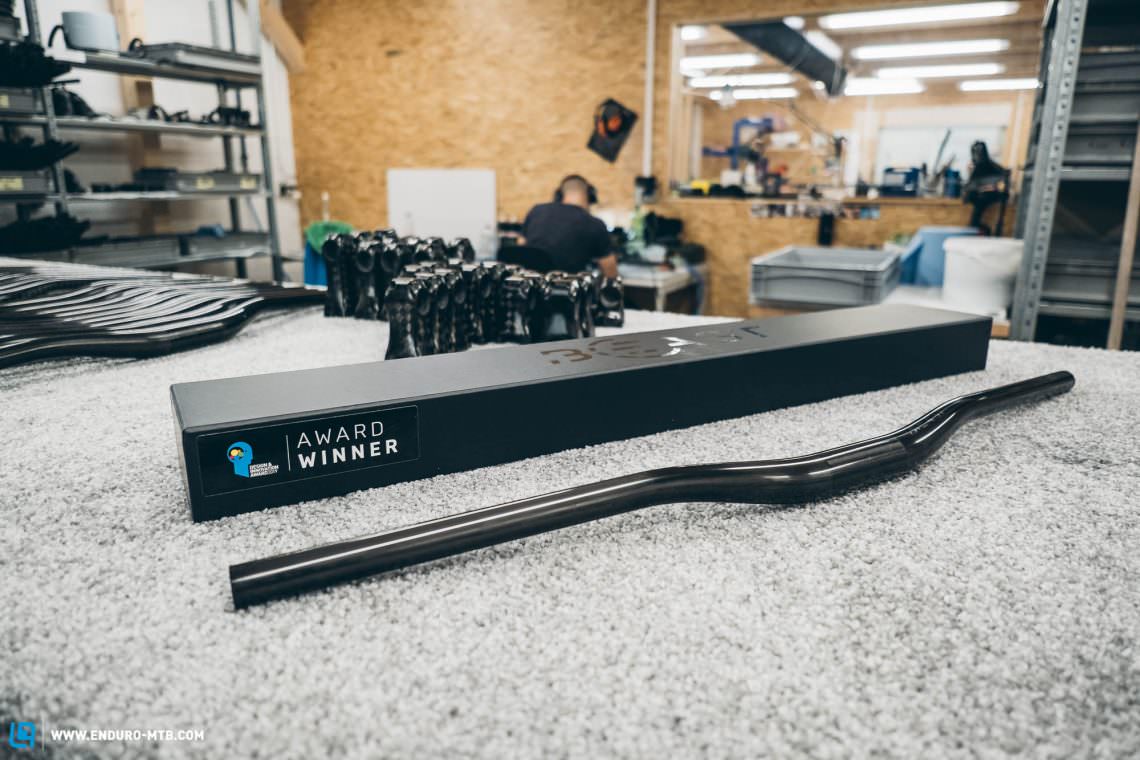
How the components and their properties harmonise matters more than the properties of individual components by themselves. A bike is only as good as its weakest component! Of course, you can compensate for certain properties but, in the end, it all depends on the bike as a whole! We’ve repeatedly noticed this in our group tests: it’s obvious which brands test their complete builds extensively and spec them accordingly, and which simply cobble them
together in an Excel spreadsheet. It also depends on you, your riding style, and your fitness level. For example, a pro racer will be happy about the precision offered by a super stiff handlebar while a beginner is likely to suffer excessive arm pump, being forced to stop regularly on the descents when relying on the same setup.


It’s impossible to explain how aluminium and carbon will feel without knowing a whole lot more about you as a rider and your setup. Cesar Rojo is convinced as well: ” It’s the
package!” So, until you can try out the options for yourself, we’ll just let our panel of experts
describe how they experience the difference between the two materials and which they use
on their own bikes.
The frame obviously plays a big role. We try to not make them very, very stiff. But the handlebar can sometimes play a bigger role than the actual frame. I personally do not like 35 mm handlebars because they are way too stiff. I have always loved aluminium bars at 31.8 mm. – Cesar Rojo, Unno
There is no reason to go carbon if you want to have a good ride. Carbon and alloy both win races. We build frames from aluminium that are lighter and stronger or the same as carbon, and that ride better. – Leo Kokkonen, Pole
Aluminium frames are great. But for me personally, the snappy, lively, super nimble feeling of a lightweight carbon frame cannot be matched by alloys. – Nic McCrae, Santa Cruz
We can completely mimic the performance of the carbon fibre frames coming from Taiwan or China. But we can add the reliability factor of the steel fibre, so that you can ride your carbon bike just as you are riding your alloy bike. – Dave Luyckx, REIN4CED
Although I always had access to carbon rims, I stuck with aluminium for a long time. However, I’ve been using carbon rims for a year and a half. They’re snappier, more direct and precise, which I’ve come to prefer. – Andreas Tschanz, DT Swiss
On my downhill bike, I ride both aluminium and carbon rims. I use only carbon rims on my enduro bike. – Nils Verhoeven, DT Swiss
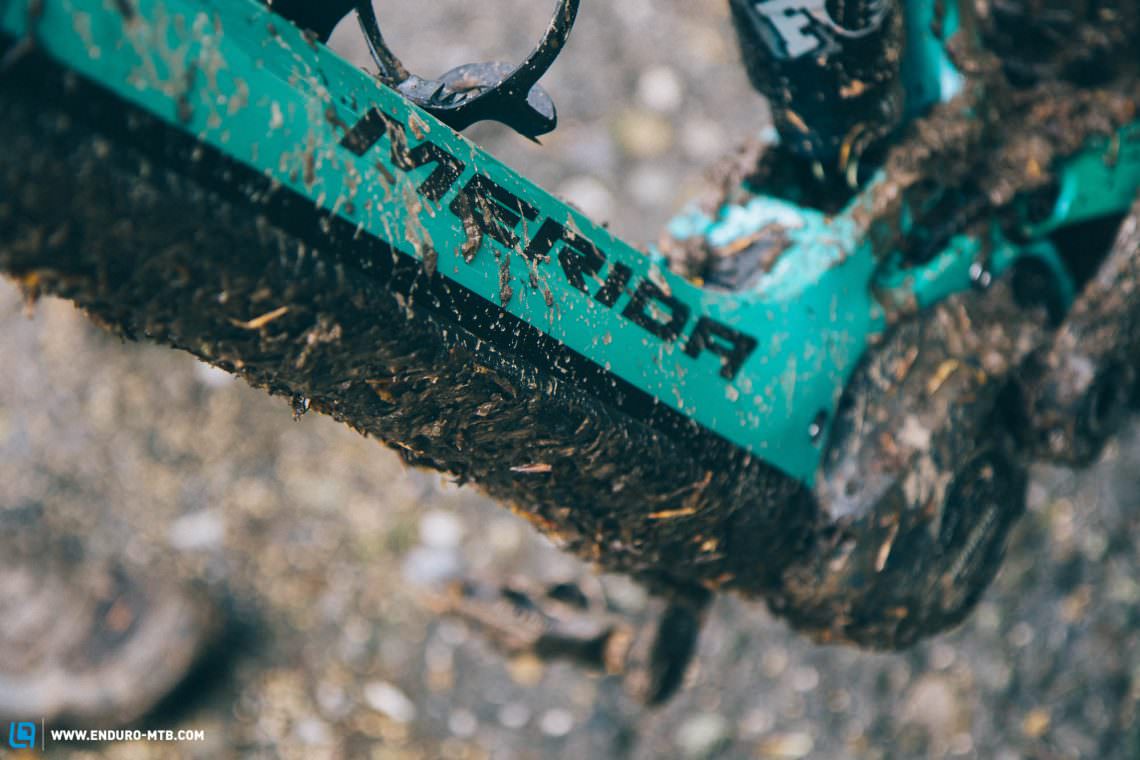
Our message to you
You’ve probably already noticed that this comparison isn’t about lightweight components. Good mountain bikes have more important qualities than the lowest possible weight, such as performance, handling, and durability. Geometry guru Chris Porter has already shown that bicycles can even benefit from additional weight on the frame on the descents, as long as the weight is positioned correctly, low down on the frame. This is another reason why many eMTBs are so capable on the downhills – no carbon or high-end components necessary! You may also have noticed that we haven’t mentioned price differences much in our comparison. When comparing only the characteristics of the materials, price is of little relevance. But, of course, most of you will also look at the price tag when it comes to buying components. To conclude this comparison, we’ll give you a few questions that you can ask yourself to help guide your view of the two materials and make it easier to decide which is best for you.
How big is your budget?
How much money do you want to spend? If you’re on a tight budget, the answer is relatively simple: aluminium! You will usually have a better experience with affordable aluminium. For a performance advantage with carbon, you’ll need to buy high-end, and high-end carbon is expensive. Stay away from super cheap carbon components or no-name goods from the internet.
What is your aim?
What advantages are you hoping to gain from carbon components? More direct handling? More compliance and comfort? Or simply street cred? It is also important to pinpoint where you would like an upgrade or a change. For example, if you suffer from arm pump, it may be due to an overly stiff handlebar. On the other hand, if you lack cornering grip, your rims and wheels could also be too stiff, or your choice of tires or tire pressure may be unsuitable. Try
to be as clear as possible about your needs before making a purchase.
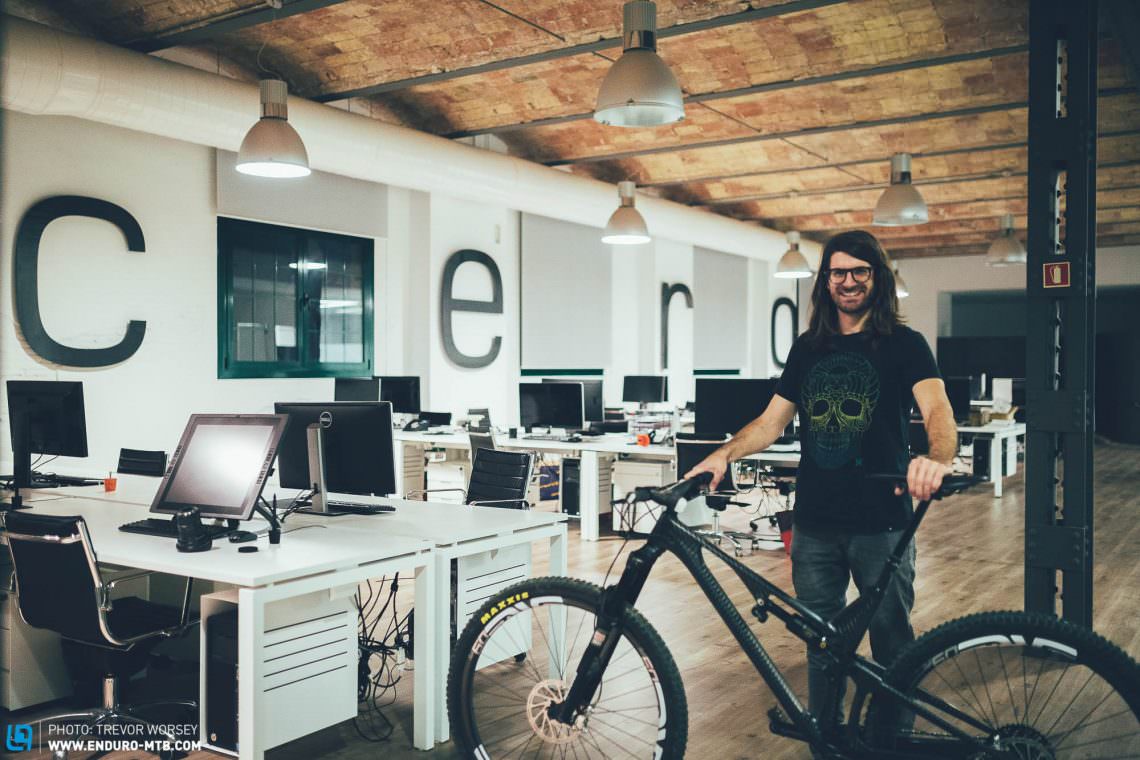
A question of (riding) style: How do you ride?
Do you take down trees with your bike like Brage Vestavik? Or do you dance and weave through them instead? If you regularly find yourself taking dents out of your aluminium rims, an expensive carbon rim upgrade may be a risky investment. And for all the weight fetishists among enduro riders: a sturdy carbon rim for enduro use isn’t necessarily lighter than one made of aluminium, but it can feel and ride completely different. When it comes to wheels, the tires that you’re putting on your rims are just as crucial. A light, flimsy casing increases
the risk of puncturing, which also poses a danger to carbon rims, as proven by the numerous broken rims of our 2021 mountain bike group test.

What do you like?
To be honest, all that matters is that you love your bike! If your piggy bank is bursting at the seams and you really want that new component you’ve been drooling over, then treat yourself, regardless of whether it is the raw surface of a machined or beautifully welded aluminium frame or the glossy finish of flawlessly laid carbon fibres! That said, don’t be blinded by marketing hype, but get good, high-quality components that will last a long time and put a smile on your face for many rides to come. We hope that our reviews and group tests will guide you in this endeavour!
What is your choice? Write us hello@enduro-mtb.com
Conclusion
We would have liked to give a more straightforward answer to whether carbon is better than aluminium. They’re both excellent materials and you can have good rides with either. The decisive factors are the manufacturing quality of a component and how well it plays with the rest of your bike, more so than just the material. So, the next time you hear a carbon myth and find everyone craving black fibres, you’ll know better and can stay relaxed!

Did you enjoy this article? If so, we would be stoked if you decide to support us with a monthly contribution. By becoming a supporter of ENDURO, you will help secure a sustainable future for high-quality mountain bike journalism. Click here to learn more.
Words: Moritz Geisreiter Photos: Various




